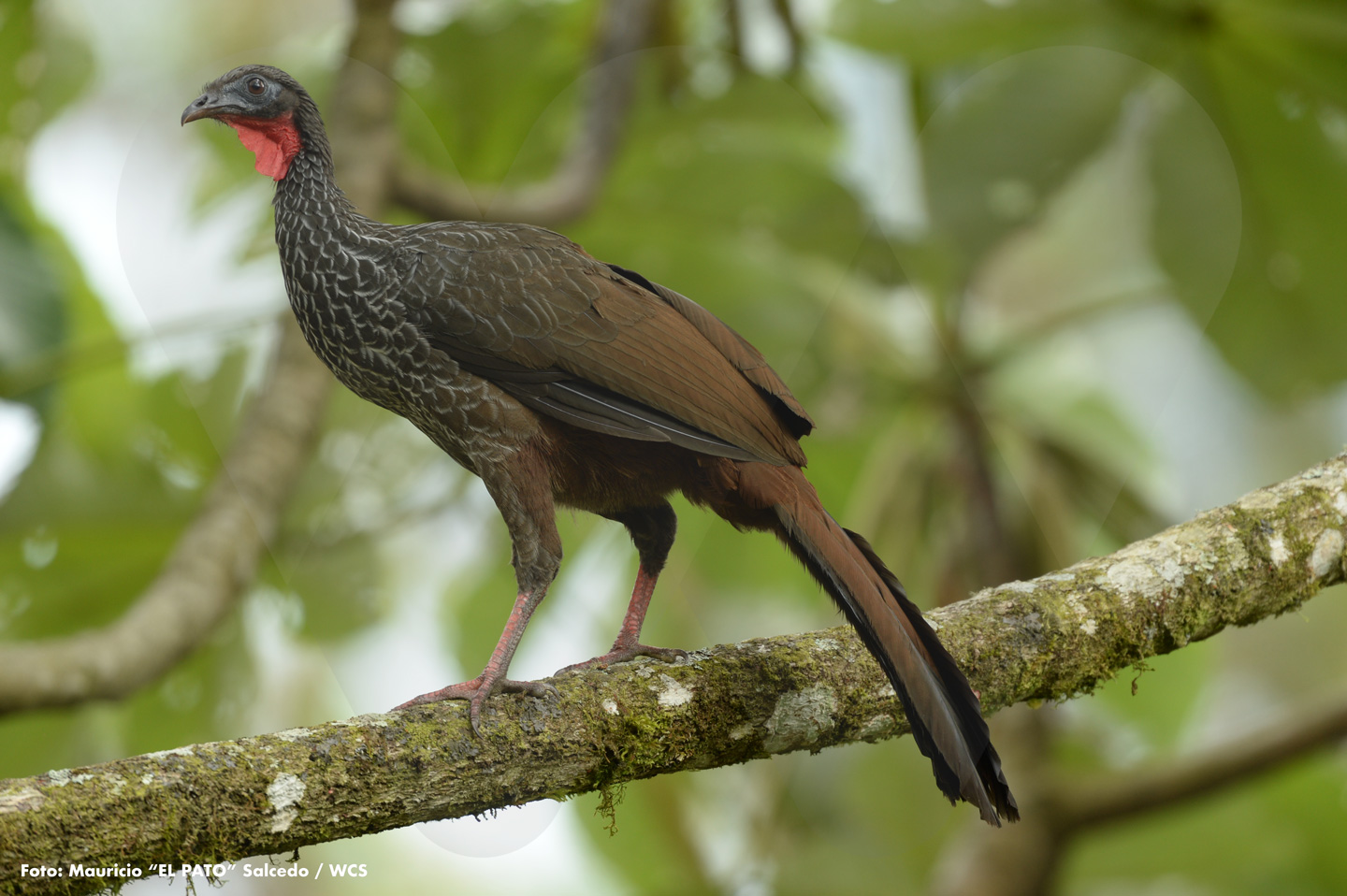 Endemism
Endemism
The Cauca guan is found only in Colombia, which means it is an endemic species to our country. Its habitat is associated with four very specific areas within the middle basin of the Cauca River. In these locations, Penelope perspicax, its scientific name, lives between 1,200 and 2,100 meters above sea level. It inhabits small remnants of sub-Andean forests that still survive in lands belonging to Risaralda, Quindío, and Valle del Cauca.
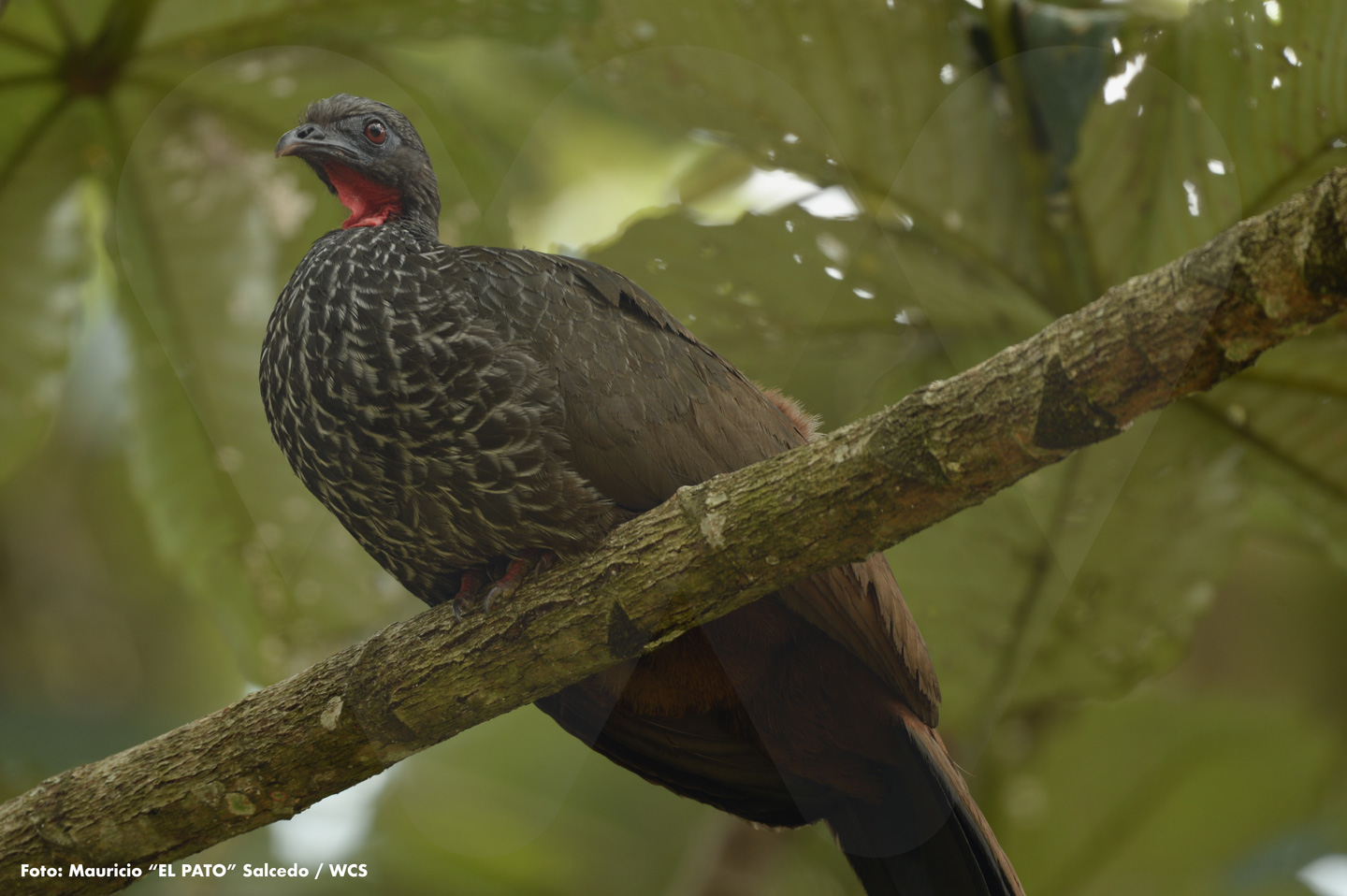 Threat Status
Threat Status
There are two very important reasons why the Cauca guan is currently considered an "Endangered" species by the International Union for Conservation of Nature (IUCN). On one hand, its meat has long been targeted by hunters. On the other hand, the loss of the forests that once were its home—forests that disappeared due to deforestation and agricultural expansion—has further threatened its survival.
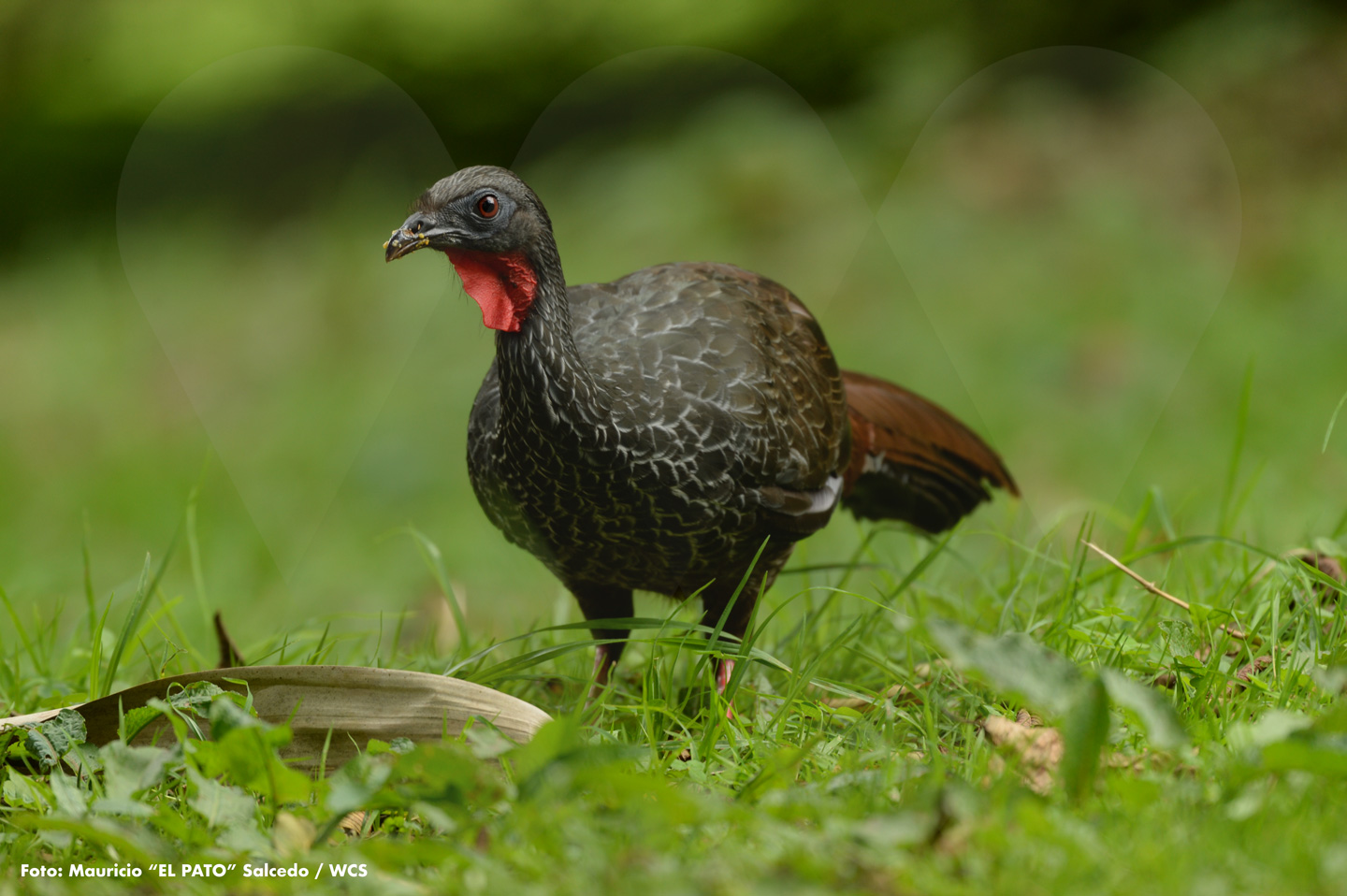 Diet
Diet
The main food source for this bird is fruit, which it supplements to a lesser extent with insects, leaves, and flowers. Its role as a frugivorous bird makes it very important for seed dispersal, a process that naturally helps regenerate the forests that are its home. It is worth mentioning that the Cauca guan is usually found wandering alone; however, it can also be seen in small groups.
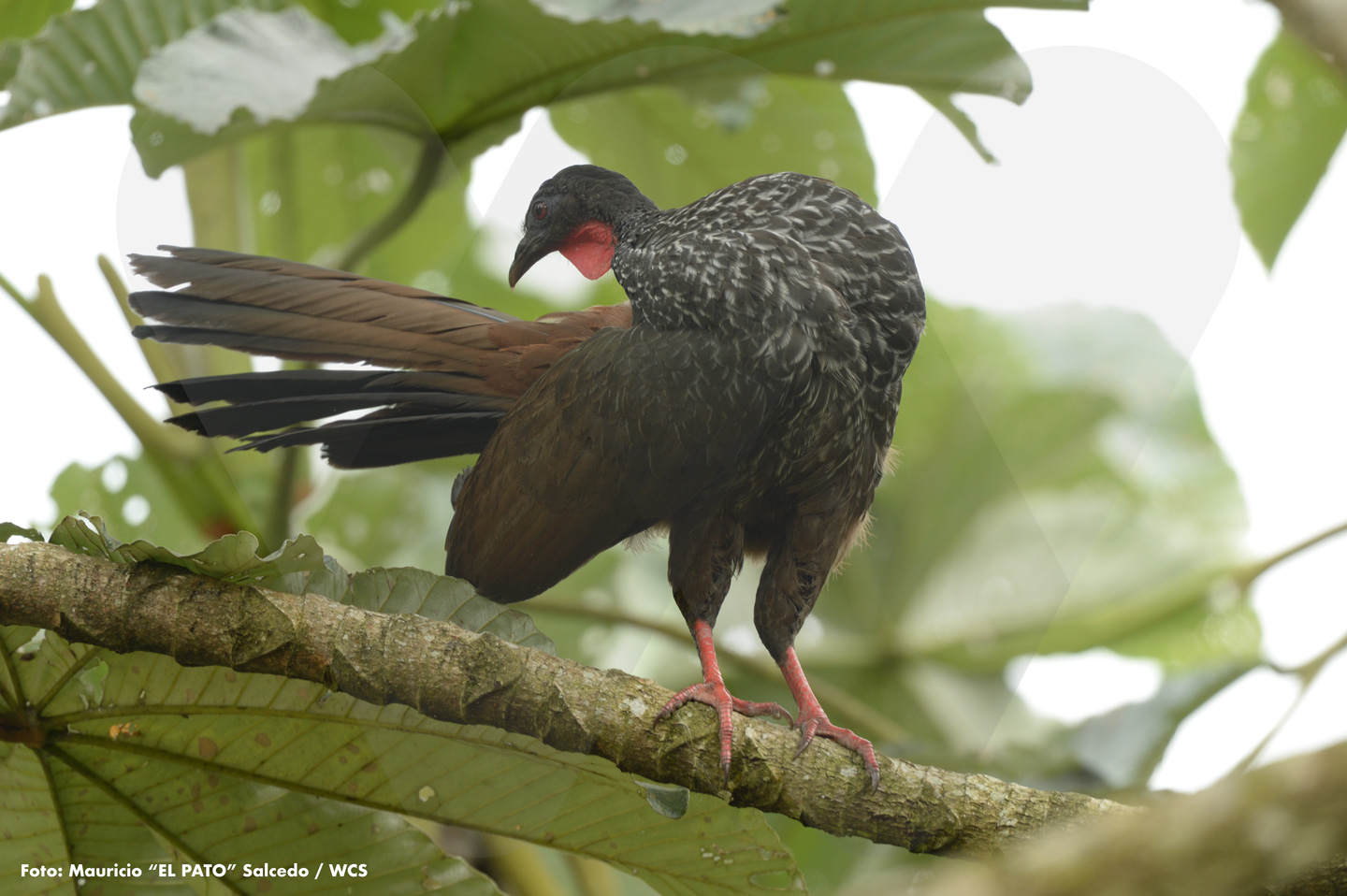 Yotoco
Yotoco
As part of initiatives aimed at increasing conservation and knowledge about Penelope perspicax, WCS Colombia developed, in collaboration with the National University and other regional universities, a monitoring plan specifically focused on the Bosque de Yotoco National Forest Reserve. This natural area, covering 559 hectares, protects a patch of sub-Andean forest similar to those that once covered the eastern slope of the Western Andes. The Cauca guan inhabits this small forest patch.
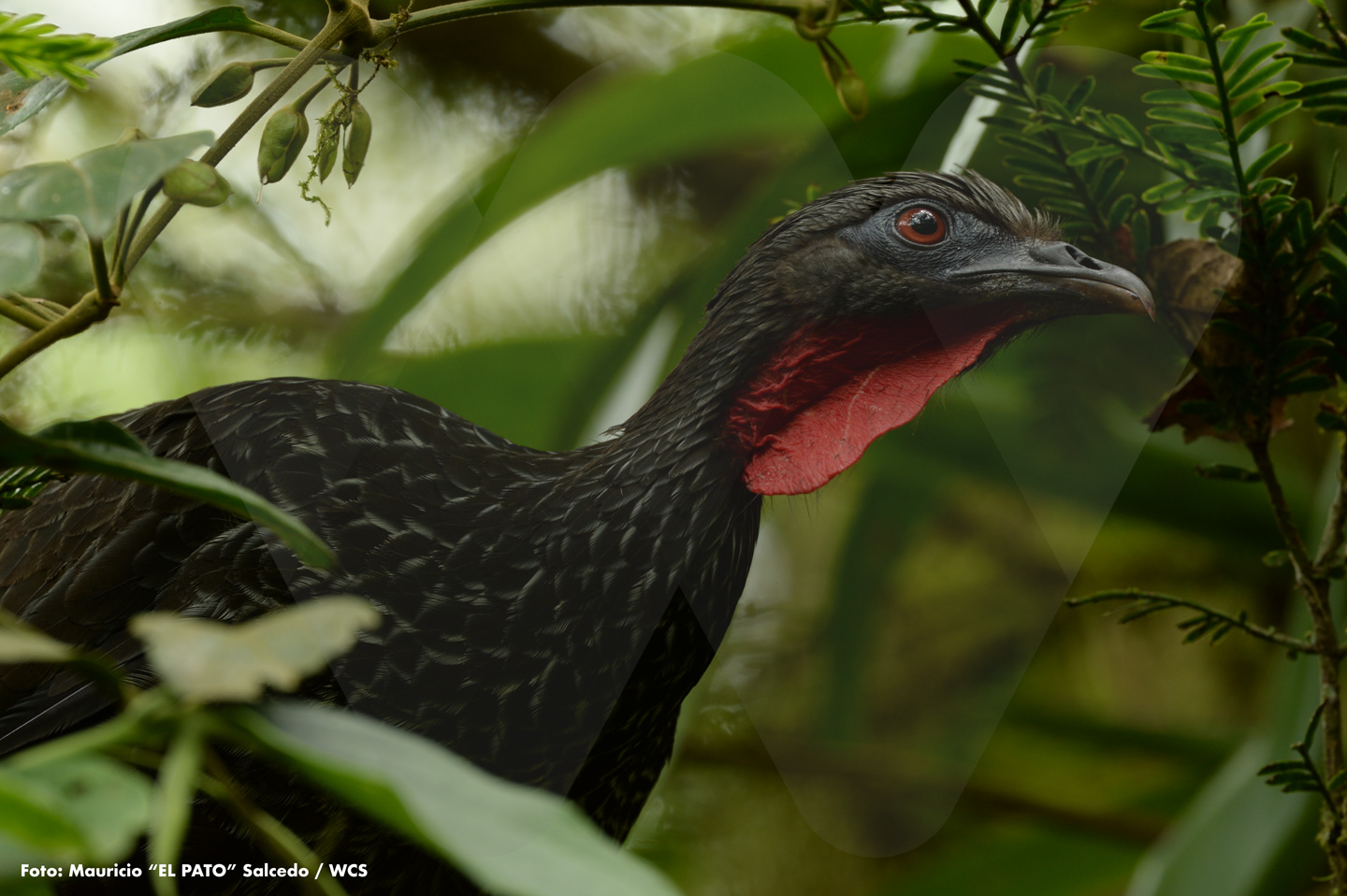 Management Plan
Management Plan
In 2006, the Cauca guan had a management plan jointly developed by the Alexander von Humboldt Institute and the EcoAndina Foundation. Twelve years later, in 2018, this plan was updated with the support of other organizations and institutions, led by WCS Colombia and the Calidris Foundation. This document, which you can download at the following link, describes what we currently know about this species and outlines the actions we must implement to ensure that Penelope perspicax does not disappear and continues to be part of Colombia’s valuable wildlife heritage.
Traslated with AI support